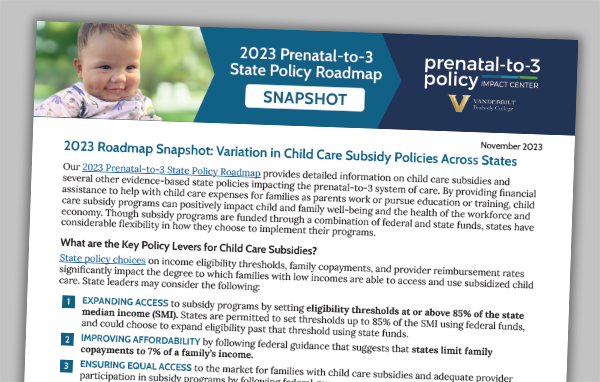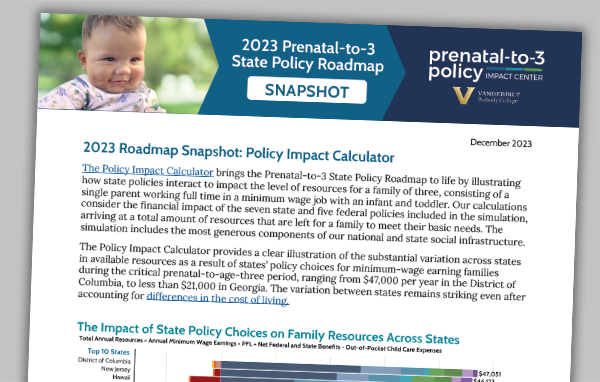The 2023 Prenatal-to-3 State Policy Roadmap identifies child care subsidies as one of the most effective policies at improving child and family well-being and the health of the workforce and economy.
The Roadmap tracks state policy activity based on three key policy levers that can be used to effectively implement subsidy programs and provide families the support they need.
These include:
- Setting income eligibility thresholds at or above 85% of the state median income,
- Limiting copayments to 7% or less of a family’s income, and
- Setting reimbursement rates at or above the 75th percentile of the state market rate survey or use a cost estimation model to set reimbursement rates.
Over the past few years, many states have made enhancements to their child care subsidy systems using these policy levers.
- Seven states have implemented all three key policy levers for child subsidies.
- Sixteen states set income eligibility thresholds at or above 85% of the state medium income.
- Twenty-four states limit copayments to 7% of family income or less for all families
- Twenty-six states set equitable infant and toddler reimbursement rates at or above the 75th percentile of the market rate survey.
The recently updated Prenatal-to-3 State Policy Roadmap provides insight into the core policy levers and further illustrates their interplay through vivid graphics, showcasing the variation in subsidy policies across states.





